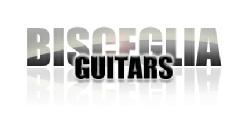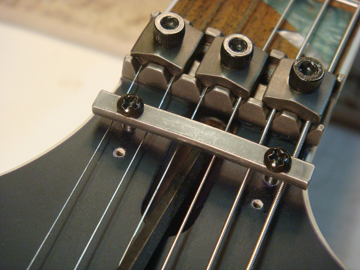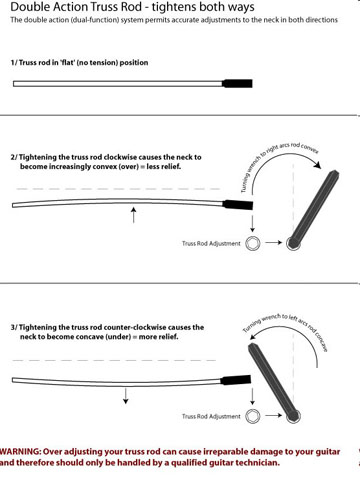
How To Tips


Order on Line or Call

Weekdays 9am -



Truss Rod Adjustment



First if you feel uncomfortable doing this I recommend you don't. Have a professional do it for you.
I think it is important to know, without insulting anyone's intelligence, what the truss is. It's quite simple, it's a rod usually steel, or similar material, that is permanently imbedded into the neck of the instrument running parallel to the neck from the nut to the to about the last fret. It is anchored at one end, and threaded at the other. It's set into the neck concave to the fret board when it's in its most relaxed state. Anchored at one and and an adjustment nut at the other. The truss rods only function is to counter the string tension placed on the neck. This is a traditional rod that is found in most guitars today. Tightening the truss rod nut puts tension on the neck causing it to bend backwards, loosening it causes the strings to have more influence on the neck therefore pulling it forward.
1. Start by sighting down the length of the neck to see if there is any bow in the neck. Back bow, forward bow, or straight. You may also check to see if there is any warp or twisting of the neck. If you determine there is I would recommend you stop right here and have a professional correct this for you. Some players like a straight neck and some prefer some relief or a slight bowing upwards of the neck (forward bow). If there is back bow of the neck you will most likely get fret buzz, and in some cases if the action is not set correctly you may get it when the neck is straight. I, and most players do, prefer the neck set with a slight amount of relief (forward bow) so the action can be set without fret buzz. If there is too much forward bow it will be difficult to set low action in the higher register of the neck.
2. Leave the strings still on the guitar and tuned to concert pitch.
3. Remove the truss rod cover if there is one on the head stock. Some guitars are adjusted at the other end. Locate the truss rod hex nut, allen nut, slotted nut or what ever the adjusting hardware is. It is important to use the correct size tool for this adjustment. If you strip the adjusting hardware it will be difficult to remove the hardware and/or adjust the truss rod.
4. Sight down the neck and determine if the neck is forward bowed or back bowed.
5. If the neck is forward bowed too much (the middle of the neck is lower than the two ends) tighten (CW) the truss rod one eighth of a turn. You should see a change almost immediately. I let the guitar set for about an hour before I decide the adjustment was sufficient. Make another one eighth turn if needed. After the neck settles there will be some slight additional movement. This is usually enough to make any adjustment necessary. DO NOT make any more adjustments after a quarter turn of the truss rod adjustment nut. Let the guitar set over night or at least 12 hours before you make any more adjustments. Adjusting the truss rod any further than a quarter of a turn at a time can cause damage to the truss rod or the neck. If the adjusting nut has too much resistance STOP do not force the adjustment. Wait till the neck settles in over night then try again. If after 12 hours or over night the truss rod adjustment still has too much resistance STOP and wait an additional 48 hours before attempting to make any adjustments again.
6. If the neck is Back bowed (the middle of the neck is higher than the two ends) loosen (CCW) the truss rod one eighth of a turn. I found the full affect of this adjustment may take a little longer to see but you should see some change almost immediately. Repeat if you feel it is necessary. Again let the neck settle in over night or at least 12 hours. Make any additional changes if necessary.
7. If you prefer a straight neck make the necessary adjustments sighting down the neck after each change is made using the above rules until you are satisfied with the condition of the neck. Check again after at least 12 hours. Make any additional adjustments if necessary. Remember, if the adjusting nut has too much resistance STOP do not force the adjustment.
The above rules will apply If the guitar has a two way adjustable truss rod (Hotrod). Also called a double action truss rod. One thing to be aware of when adjusting a two way adjustable truss rod. When adjusting for back bow the adjustment nut will not eventually become loose as with a traditional truss rod. So do not over adjust you could damage the neck or the truss rod. In other words it will tighten in both directions CW & CCW. Follow the rules in step # 5.
